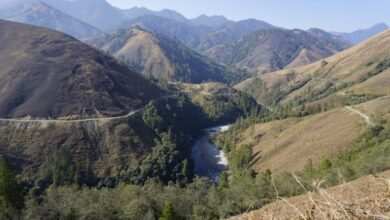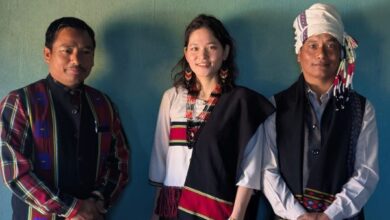When will Meghalaya achieve food security
The state has a long way to go in meeting its domestic rice demand

 Though Meghalaya has completed 53 years of statehood, it will take several years to achieve food security for its increasing population.
Though Meghalaya has completed 53 years of statehood, it will take several years to achieve food security for its increasing population.
Today, the population is approximately 38 lakh. Rice is the staple food of the majority of people here. In Meghalaya, though many consume other food items, such as meat and meat products, eggs, vegetables, fish and fish products, soya beans, and wheat and wheat products, practically all food items come from outside the state.
For example, the annual average local rice production from our fields is 303.400 tonnes. According to a report, the state is still in a deficit of about 1.37 lakh tonnes of rice grain annually. There is a huge demand-supply gap to be bridged. This gap is met by importing rice from outside, and with it, the income flows outside the state which should have been retained within if we are to be self-sufficient in rice to have the multiplying effects in our economy.
The deficit in rice is met by the Ministry of Food and Civil Supplies in the form of the National Food Security Act (NFSA) to the tune of approximately 1.40 lakh metric tonnes annually and the shortfall is also met by the Open Market Supply.
This precious food grain is of various varieties rich in vitamins but concentrated only in certain belts of the state. The yield is also very low. The most common among them are Boro, Sali and Ahu. Then, IR-8, IR-36, Jaya, Pusa-2-21 and low land like Pakaj and Ranjit and low altitude like Bahadur. In the midland altitude, RCPL-87-8 are also cultivated. However, short-grain sticky rice and Joha are also grown in low, midland and in hilly slopes. But the yield is quite low compared to the production of other varieties. The selling price of these varieties is also high.
The production of local varieties of rice is more in the Garo Hills than in the Khasi and Jaintia Hills due to the climatic and topographical conditions. The land is more fertile in the Garo Hills than in the other two places. In the Jaintia Hills, rice production is more in Raliang Elaka, Shiliang Myntang Elaka, Labang Nongphyllut-Pangam-Raliang Elaka and Nongjngi Elaka.
In the Khasi Hills, there are a good number of belts which grow rice. Ri Bhoi is traditionally considered the ‘Rice Bowl’ or barn of Khasi Hills. However, now rice production is concentrated mostly in Umroi-Bhoirymnong, the valley of Umta from Marngar-to Umden, Marmain, Khulia, the valley of Umpli, the valley of Umsla; Umsong, Nongladew, Nongbirthem, Umsohphria, Patharkhmah valley and a few others on the western side.
Again, in the Khasi Hills, we have some patches of rice producing valleys like the Sung valley. The rice produced here is rich in taste and aroma owing to the extraordinary soil conditions.
To its southern side, the Umngot valley produces a substantial quantity of rice. On the western side of the Khasi Hills, the worth-mentioning patches of rice-growing areas are the Mairang-Umiong valley, Kynshi village valley, the Umyiap valley and the Wahblei rice growing valley wayward to Riangdo-Sonapahar.
There are also patches of land in which rice is grown in the Khasi Hills, but the quantity is not sufficient for self-consumption for three or four months. The reasons for this are vast tracts of land are not suitable for paddy cultivation, or just left fallow or barren or the production is not viable.
Another main reason is that there is no manpower available for all the children have left for education. Employing labourers has become unviable. After education, children of cultivators or farmers seek better prospects of livelihood and it is easier and cheaper for them to purchase rice and other food items from the open market.
Another important reason why rice and other crop cultivation is shrinking is because growing has become prohibitively costly in the procurement of seeds, manure, labour, tools and implements, hire of machinery, rent on land etc. The returns are not commensurate with the investments. Landlessness of the farmers and cultivators is another major impediment.
That is broadly the scenario in the Khasi and the Jaintia Hills. In the Garo Hills, it may be quite different in some aspects.
Now, turning to the Garo Hills, which produces comparatively more rice than the other two eastern sectors of Meghalaya, local rice is grown in Haringbhanga, Bhoglarbita, Jugirjhar, Nagar Gaon, Kodamsali, Dhabangpara, Joranggre, Khokhapara, Nayapara, Hatogaon, Borogobol, Nalbari, Nayagaon, Bhaitbari, Gasbari, Askikandi, Khetadowa, Rajpur, Kujani, Belbari, Gomaijhora, Sidakandi, Gidibala, Nimaikata, Shyamdin, Bangsidua, Kaimbatapara, Pushkumipara, Chitbinang, Bagalkhata, Bolatbhita, Borshikandi, Haribhanga, Moulakandi, Gandhimari, Burirjher, Goladighi, Pathorkata, Pabomari, Bhaganpur and Nidanpur of Tikrikilla Block; then in Selsella block we have Hallidayganj, Shidakandi, Newbhaitbari, Magurmari, Salbilla, Horipur, Namabilla, Bhotdoba, Kolagaon and Balachanda.
In Garobadha area, we have Gonglanggre, Madupara, Sangkara Horigaon, Anderkona, Maljanggre, Nagapara, Baghmara and Nokatgre. Then we also have the flood-prone Phulbari and some parts of Rajabala.
Again, rice is produced in large parts of North Garo Hills, like Mendipathar, Kharkutta, some parts of Rongjeng, Bajengdoba. In the west, we practically have the whole of South West Garo Hills.
I want to reiterate that though Meghalaya is on the map of the rice-producing states of India, it is just a dot compared to other giant rice-producing states. In fact, the hard truth is that our state depends on imports from other states. This comes at a heavy price for our state’s economy.
Meghalaya remains a largely consumer state. Despite its agrarian history, the production of its staple food is not enough to meet the domestic demand. Efforts have to be made to boost this production so that food security is ensured and the primary economy of the state grows.
Banner Image: Aerial view of rice fields on the areas of Khliehhasem Mawkynrew. Photo by Wann Majaw under the Creative Commons CC0 1.0 Universal Public Domain Dedication.





